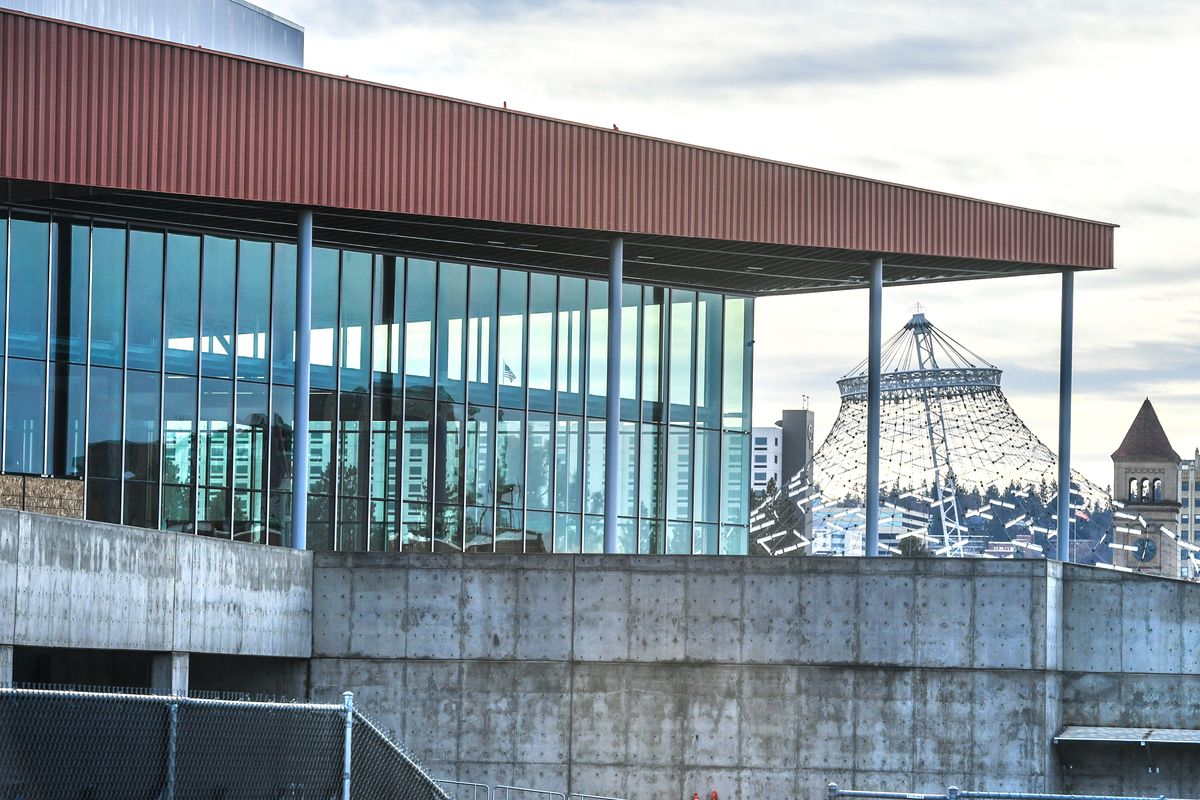Contractors expect demand for commercial construction to decline in 2021 as pandemic creates project delays, cancellations

The future was bright for Spokane-area commercial construction contractors at the beginning of 2020, with several projects in the pipeline and many more to come.
But as the coronavirus pandemic took hold nationwide and in the state last year, it caused delays and shutdowns for several projects while increasing the cost of construction because of extended timelines.
Nationwide, contractors are anticipating demand for several types of construction projects to decline this year, and few are expecting the market to recover to pre-pandemic levels for at least six months, according a recent survey by the Associated General Contractors of America, which represents more than 27,000 construction firms nationwide.
“All these impacts COVID-19 created across the country certainly has an impact on our area of Spokane – from retail to private developers and even the school (construction) work,” said Hollis Barnett, president of Inland Northwest Associated General Contractors. “We’re seeing (school construction) is going to come to an end, not necessarily because of COVID-19, but because schools are being built out.”
Eastern Washington University, Mead, Central Valley and Cheney school districts completed new projects in 2020 with a combined valuation of more than $101 million, according to Spokane County Assessor’s Office data.
AGC’s Construction Hiring and Business Outlook Survey found that 78% of contractors nationwide reported projects had been canceled or postponed, while 25% reported gaining new or additional work during the pandemic. The survey included responses from 1,300 contractors that perform all types of construction other than homebuilding.
One-third of firms reported business have already matched or exceeded levels a year ago, while 12% of companies expect demand to return to pre-pandemic levels within the next six months.
About 55% of firms indicated they either do not expect their volume of business to return to pre-pandemic levels for more than six months or they are unsure when their businesses will recover, according to the AGC.
“This is clearly going to be a difficult year for the construction industry,” Stephen E. Sandherr, AGC’s chief executive officer, said in a statement. “Demand looks likely to continue shrinking, projects are getting delayed or canceled, productivity is declining, and few firms plan to expand their headcount.”

In November, Spokane County employed 14,000 construction workers, an 8% decrease compared to 15,300 workers in 2019, according to AGC data. Washington employed 222,700 workers in November, a 1% decrease from 224,900 jobs in November 2019.
Although contractors anticipate hiring fewer people this year, they also indicate it remains difficult to fill open positions with qualified workers, according to AGC’s survey.
“Unfortunately, too few newly unemployed are considering construction careers, despite the high pay and significant opportunities for advancement,” Ken Simonson, AGC’s chief economist, said Thursday.
Contractors have made significant changes to staff scheduling and project management to protect workers and communities from the spread of COVID-19, but those changes impact productivity and extend project timelines, Simonson said.
Barnett expects construction employment in the Spokane region to be “status quo” this year.
“We won’t be hiring additional people, but it doesn’t look like we’ll be having to lay folks off,” he said.
Despite the grim outlook for the construction industry, Spokane-area contractors see a silver lining in building activity this year.
For the past three years, Spokane’s construction industry has been robust with plenty of residential, commercial and federal projects, Barnett said.
“What’s good about that is it allowed us to build a bit of backlog,” said Barnett, who is vice president of Spokane-based Garco Construction. “My prediction is 2021 will be a decent year because of the backlog, but we are not seeing replacement of work for 2022.”
Central Valley School District’s new Ridgeline High School in Liberty Lake is among several of Garco Construction’s projects that are underway.
“Most of those projects are two to three years long, and that gives us a buffer to weather the storm,” Barnett said.
Barnett anticipates there will be a short-term increase in warehouse construction, driven by e-commerce companies needing inventory storage because people are shopping online during the pandemic.
He also expects robust growth in military and civil construction in the state.
The AGC indicated its construction industry outlook could improve “if federal officials are able to boost investments in infrastructure projects, backfill state and local construction budgets and avoid the temptation to impose costly new regulatory barriers.”
Sandherr, AGC’s CEO, said this year is an ideal time to improve highways, repair transit systems, upgrade airports and modernize waterways.
Spokane-based Lydig Construction is optimistic about opportunities for future projects this year, as it’s continuing to receive inquiries from architects, said Vince Campanella, Lydig Construction’s vice president of operations for the Eastern Region.
Lydig Construction, which also has offices in Bellevue and the Tri-Cities, builds a variety of public works projects and is the contractor for The Podium, the $53 million indoor sports complex under construction in downtown Spokane.
The firm is also building the new 150,000-square-foot Shaw Middle School in northeast Spokane.
“There’s a lot of public school projects and higher education stuff that’s coming this year, so we’re optimistic there’s still a pipeline for nice projects in 2021,” Campanella said.
Some projects are dependent upon the state’s capital budget, which allocates funding to build and expand K-12 schools and universities, he added.
“We’re optimistic and most of the industry is optimistic that the Legislature views construction as an economic driver and they will want to spend money on construction in 2021 and 2022 to spur the economy and put people to work,” Campanella said. “The bottom line is we’re fairly bullish on what construction looks like in this region in the next 12 to 18 months. We will keep our fingers crossed that the vaccine rolls out and, hopefully, no surprises pop up.”